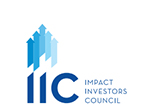|
Enterprise Showcase
Dialogue with Madhav Krishna, CEO and Founder at Vahan.ai
|
|

1
What were the key systemic challenges in India’s employment ecosystem – particularly for blue-collar and gig workers—that informed the creation of Vahan? How have these challenges evolved based on on-ground experience?
|
When I looked at India’s employment ecosystem, especially for blue-collar and gig workers, what struck me was how fragmented and exclusionary it was. Traditional recruitment channels were opaque, often dependent on middlemen or personal networks, which automatically left out those without the right connections. For millions, smartphones and digital literacy were also barriers, which meant that job portals or apps were out of reach. And then there was the larger issue – that despite being a 300-million-strong workforce, informal workers had very few pathways into the formal economy. These challenges became the foundation for Vahan’s creation. What we have learnt on the ground is that while these barriers are still present, the right design can overcome them. By keeping job discovery frictionless, voice-first, and accessible through a simple phone call, we have placed over 1 million workers across 920+ cities and are now connecting over 40,000 people every month to work, many of them experiencing formal employment for the very first time.
|
2
Could you elaborate on that journey? What insights did you gain regarding the genuine challenges gig and blue-collar workers encounter in securing suitable employment?
|
The journey began with a very personal realisation: the difference between poverty and privilege is often just luck. Warren Buffett calls it the "ovarian lottery" - the circumstances you're born into. That thought stayed with me, and when I returned to India, I was determined to build something that could change those odds. We started small, with a mobile app to help low-income learners improve their English. Over time, it evolved into what is today India’s largest AI-powered recruitment platform for gig workers. Along the way, the insights were humbling. We realised that long forms and English-only platforms don’t work in this context—what people needed was technology designed with empathy. So we built voice-first, multilingual support, and made the interactions feel natural and human. We also learnt that trust was just as important as access since workers wanted to know that the opportunities they were being connected to were real and reliable. And perhaps the biggest learning was that in India, AI can only create true impact if it feels local, human, and inclusive.
|
3
Given Vahan’s scale and direct engagement with tens of thousands of jobseekers every month across hundreds of cities, what does the future of work actually look like for the segment it serves, and how are such platforms shaping or shifting that future?
|
For India’s blue-collar and gig workforce, the future of work is going to be inclusive, decentralised, and deeply enabled by technology. We are already witnessing this shift play out. The gig economy is expected to reach 23.5 million workers by 2029–30, and platforms like ours are ensuring that this growth is equitable, not exploitative. What excites me is how access is being democratised; people without smartphones or internet connections are discovering opportunities through a simple phone call with our AI recruiter. At the same time, we are seeing the rise of a new layer of local recruitment entrepreneurs, or Vahan Leaders, who are scaling their own businesses while connecting thousands of workers to jobs. To me, this is what the future looks like: not just individual placements, but a system where entire communities are uplifted, and technology becomes the infrastructure for economic mobility.
|
4
Vahan’s model is built on inclusive technology – especially voice-first AI. How intentional was this design in addressing the digital divide, and how do you think technology can better meet the realities of India’s underserved jobseekers?
|
Our decision to build a voice-first AI recruiter was a very deliberate one. In India, the digital divide is real, and we knew that if we went down the path of apps and forms, we would end up excluding the very people we wanted to serve. Instead, we chose the simplest interface possible: a phone call. Today, our recruiter speaks to job seekers in English and Hindi, guiding them to the right opportunities without requiring an app, internet access, or even digital literacy. That design choice has been transformative because it makes access feel natural and inclusive. Looking ahead, we’re excited about expanding this to eight Indian languages and regional dialects so that the experience truly mirrors the diversity of our workforce. I believe the future of technology for underserved segments lies in meeting people where they are, not asking them to adapt to where the tech is.
|
5
Which metrics are most relevant in evaluating impact beyond simple job placements—such as retention, income uplift, or digital inclusion? Are there any illustrative examples or community-level outcomes that reflect transformative change facilitated through the platform?
|
At Vahan, we don’t just measure success by the number of jobs filled—we look at what happens after someone is placed. Retention and income uplift are critical markers of impact. For instance, Asha, a single mother in Bangalore, went from juggling multiple odd jobs to earning ₹30,000 a month with Zomato through our platform, which allowed her to send her kids to school. Or Ashok, a caterer who lost his job during COVID and found work with Swiggy within days, regaining stability almost instantly. Beyond individuals, we’re seeing the impact at a community level through our Vahan Leaders, who have scaled their operations four to ten times across regions like Bangalore, NCR, UP, MP, and Mumbai. Many of them now earn over ₹30 lakhs a month, proving that we’re not just creating jobs, we’re building ecosystems of opportunity that drive broader economic mobility.
|
6
The emergence of Vahan Leaders as local recruiters and community mobilisers introduces a layer of decentralised opportunity creation. How has this model evolved, and what does it reveal about trust-building and micro-entrepreneurship in the employment ecosystem?
|
The Vahan Leaders platform is one of the most exciting parts of our journey. It allows local recruiters to build their own businesses on top of our AI tools, and the results have been incredible. Many of these leaders are now earning upwards of ₹30 lakhs a month, and we’ve even gamified their growth through the Vahan Premier League, where top recruiters are rewarded with prizes like a Mahindra Thar or a Tata Punch. What this shows us is that trust is deeply local—workers are far more likely to engage when the opportunity comes through someone they know in their community. By equipping these recruiters with AI, we’ve created a decentralised model where opportunity flows not from the top down, but through community networks. It’s not just a business tool, it’s a movement that fosters pride, entrepreneurship, and sustainable livelihoods.
|
7
How does your AI recruiter actually learn, adapt, and interact? And what role do humans continue to play in making sure the tech remains empathetic and effective?
|
Our recruiter, powered by GPT-4o, interacts with job seekers through natural, voice-based conversations. It continuously learns and improves its recommendations by analysing skills, preferences, and employer feedback. But what’s important to stress is that humans remain central to the process. Our team ensures the system is empathetic, contextually aware, and aligned with the realities of workers’ lives. We’ve always believed that AI in India has to feel human, localised, and accessible, otherwise it simply won’t work. The technology does the heavy lifting of scale and efficiency, but the human element is what keeps it grounded and trustworthy.
|
8
What does the next chapter look like for Vahan? Whether it’s technology, scale, new sectors, or deeper impact—what are you most excited to build in the next few years?
|
The next chapter for Vahan is about accessibility, depth, and inclusivity. We’re focused on expanding from 40,000 to over 1 lakh monthly placements, with a particular emphasis on tier 2 and 3 towns where the need is most urgent. We’re also working on rolling out support in eight Indian languages so that no one is excluded because of language or literacy. At the same time, we want to continue strengthening the Vahan Leaders ecosystem, because we’ve seen how powerful it can be in driving decentralised opportunity creation. Personally, what excites me most is that our vision of bringing opportunity to a billion people is no longer a distant goal, it feels achievable within the next five years, thanks to the acceleration AI enables.
|
|
|

Madhav Krishna, Founder and CEO of Vahan.ai
Madhav Krishna is making a significant impact in the blue-collar workforce sector by using artificial intelligence to bridge employment gaps across India. Vahan.ai, India's leading AI-powered recruitment platform, has placed over 1 million workers across 920+ cities, facilitating approximately 40,000 job placements every month with industry giants like Zepto, Swiggy, Blinkit, and Zomato. Backed by LemmaTree (Temasek subsidiary), Khosla Ventures and Y Combinator, Vahan.ai’s vision is to democratize job access for blue-collar workers by using intelligent automation and inclusive technology design. The company’s plans to support eight additional Indian languages will further extend its reach, enabling deeper access to employment opportunities in Tier 2 and Tier 3 markets across Bharat.
Madhav's passion for workforce transformation is deeply rooted in his academic and professional journey. With an MSc in AI from Columbia University, he combines technical expertise with a profound understanding of the challenges faced by underserved communities in India’s labor markets.
About Vahan.ai
Vahan.ai is India's leading AI-powered recruitment platform for blue-collar workers, encompassing the food, grocery, quick-commerce and e-commerce delivery sectors. The platform is at the forefront of connecting businesses with the workforce needed to fuel the growth of India. It has established itself as the market leader in the gig-economy recruitment space, leveraging AI to streamline the hiring process for high-volume blue-collar jobs. It was also named the ‘Technology Pioneer’ by the World Economic Forum in May 2022.
https://vahan.ai/
|
|
About Impact Investors Council:
Impact Investors Council, India (IIC) is a member-based national industry body formed with an
objective to build and strengthen the impact investing eco-system in India. To know more about our work visit https://iiic.in or reach out to secretariat@iiic.in
|
Disclaimer: Data and Information in this newsletter is made available in good faith with the exclusive intention of helping market and ecosystem players, policymakers and the public build a greater
understanding of the Indian impact investing market. The data is collated from sources believed to be reliable and accurate at the time of publication. Readers are urged to exercise independent judgment and diligence in the
usage of this information for any investment decisions
Some of the information provided in this newsletter is supplied by third parties. It is important that all users understand that third party information is not an endorsement of any nature and has been put together with the
sole purpose of benefiting stakeholders.
|
| Unsubscribe |
|
|
|


